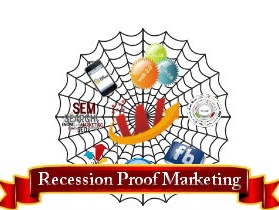
The Evolution of AI in Meta's Advertising Strategies
Meta has ushered in a new era of advertising with its advanced AI-powered ad targeting systems. In recent updates, the tech giant revealed its Generative Ads Recommendation Model (GEM), which optimizes interest matching for advertisers. By capitalizing on vast amounts of data and machine learning, META has transformed how advertisers reach potential customers, driving a significant uptick in ad performance.
Understanding the Mechanism Behind GEM
At the heart of this transformation is the GEM, an innovative model built on large language models (LLMs) that has been trained across thousands of GPUs. This system allows for real-time analysis of user behavior, accommodating billions of data points that inform the ads displayed to users. Essentially, GEM not only enhances traditional ad targeting but also shifts the paradigm that was once criticized for its psychographic methodology. With the introduction of AI into the mix, what was once seen as invasive has now become an advantageous feature of Meta's ecosystem.
Boosting Performance: Data-Driven Results
Meta has reported impressive improvements in ad performance metrics since implementing GEM. The system is now capable of delivering four times the efficiency for ad performance gains per data input. Additionally, its ability to facilitate knowledge transfer has doubled, further optimizing broader ad results. Advertisers leveraging this AI-driven approach find themselves in a better position to connect with users who may have otherwise slipped through the cracks.
A Look at Future Advertising Trends
As Meta continually evolves its advertising technologies, the implications for the future of digital marketing are profound. The integration of AI stands to revolutionize how brands interact with audiences, especially as privacy concerns and regulations become more stringent. Future advancements may lead to even deeper insights into consumer behavior, allowing for hyper-targeted campaigns that resonate more personally with users.
Counterarguments: The Risks of AI-Powered Targeting
While the advantages of using AI in advertising are compelling, there are caveats. Critics point to the ethical considerations surrounding data usage, highlighting the need for transparency in how user data is leveraged. As Meta positions itself as a leader in AI, it must balance innovation with accountability to avoid potential backlash from consumers wary of invasive marketing tactics.
Exploring Meta’s Comprehensive Model Architecture
In addition to GEM, Meta has developed other crucial components like the Meta Lattice and Andromeda models. Together, these systems create a cohesive advertising framework that optimizes engagement and performance across various platforms. For instance, utilizing the Lattice architecture supports ad ranking and enhances relevance by pooling resources from different ad types and conditions.
Practical Insights: Leveraging These Innovations
For advertisers looking to leverage these advancements effectively, it is crucial to understand how to utilize tools like Meta’s Advantage+. Integrating AI-driven recommendations can maximize ad spend efficiency. Advertisers should experiment with different formats, monitor metrics closely, and be adaptive to the changing landscapes that these AI advancements facilitate.
In conclusion, as Meta continues to innovate in AI-powered advertising systems, marketers are presented with unique opportunities to enhance their campaigns. The benefits of AI are undeniable, but as we embrace this technology, a careful approach that prioritizes user consent and ethical data practices will prove essential for long-term success.
 Add Row
Add Row  Add
Add 




Write A Comment